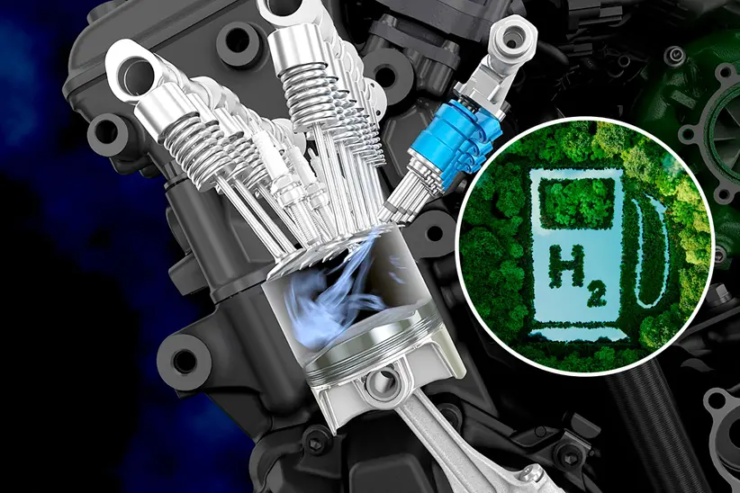Is hydrogen the future? Big Four announce partnership to develop revolutionary bike engines – MCN.
Yamaha, Honda, Suzuki and Kawasaki have announced a new research partnership that will consider the development of hydrogen-powered motorcycles that use internal combustion engines.
On May 17, 2023, the four manufacturers confirmed they had received approval from Japan’s Ministry of Economy, Trade and Industry to form a research group called HySE (Hydrogen Small mobility & Engine technology), with each of the manufacturers assuming a different role in the ongoing studies. Additional support will be provided by Toyota and Kawasaki Heavy Industries.
Kenji Komatsu, chairman nominee of HySE, said:
🔥 What about we co-host a webinar? Let's educate, captivate, and convert the hydrogen economy!
Hydrogen Central is the global go-to online magazine for the hydrogen economy, we can help you host impactful webinars that become a global reference on your topic and are an evergreen source of leads. Click here to request more details
There are many challenges in the development of hydrogen-powered engines, but we hope to see the association’s activities advance the fundamental research in order to meet those challenges.
The UK government’s hydrogen strategy predicts that the alternative fuel source will be used across a number of transport sectors by 2030, including HGVs, buses and rail. JCB have revealed plans to introduce a hydrogen combustion engine for their next-gen diggers, and it’s estimated that there could be up to six billion kWh of demand for low-carbon hydrogen from transport by 2030.
These are all extremely large vehicle types, though – and all of the Big Four acknowledge there are challenges to make the technology work in motorcycles.
Problem solving
MCN spoke to Michael Liebreich, a member of the UK Board of Trade, an honorary fellow of the Energy Institute and visiting professor at Imperial College London. He is also a former advisor to the UN on sustainable energy.
Michael Liebreich, said:
I think it’s very interesting that they’ve all decided to go in together.
“For me, that suggests they have no confidence in it. They don’t want to shut it down; they want to keep it as an option. But they want to reduce the costs of having that option.”
Liebreich cites a number of problems the four manufacturers must face – one being storage, with gaseous hydrogen currently requiring far more space than a conventional petrol tank to achieve the same level of range.
“To go the same distance, you’d need three times the size of the petrol tank,” he said. “If you’ve got a fuel tank that holds a number of kilos of hydrogen, it would hold one third of the energy of petrol.”
Liquid vs gas
One way to reduce this problem could be to use liquid hydrogen instead. However, this can also prove problematic due to the material’s natural boiling point of -252.9°C meaning it needs to be cryogenically stored.
Liebreich explains: “The problem with this is that as heat seeps into that tank from places such as the engine, the hydrogen can evaporate inside the tank, and it has to be vented. This is called boil-off.
“If you’re just venting the hydrogen, then [you can’t] park it inside, because the gas sits by the ceiling, accumulates, and is an explosion risk. Even if it doesn’t accumulate and it just evaporates, it’s a very powerful greenhouse gas.”
Flame on
Another issue mentioned by the Japanese brands surrounds flame speed in the combustion chamber. Here, you want an efficient burn when the fuel/air mixture is ignited by the spark at just the right time to interact with the piston. With hydrogen, that process goes incredibly fast.
“If you just put hydrogen into a normally tuned engine, you would get horrendous knock because the piston would be in the wrong place. The spark has to come at exactly the right point – that’s why you have timing mechanisms and fuel injectors,” added Liebreich. “You do need to redesign the engine around the flame speed.”
Not only this, but the high temperature at which hydrogen burns can mean the creation of more nitrous oxide. The US Environmental Protection Agency states that “the impact one pound of N2O has on warming the atmosphere is 265 times that of one pound of carbon dioxide”.
“You’ve got a higher temperature, which is a characteristic of the fuel. You can’t do anything about that. You can do a lot of clever things to reduce it, but you can never remove it,” warns Liebreich.
So, while it is fundamentally possible to create a hydrogen combustion motorcycle, all four manufacturers face a considerable challenge in doing so in a manner that remains efficient, cost-effective and kind to the planet. This is before we consider how the hydrogen is sourced, and the infrastructure for refuelling.
Will it ever come to fruition? We will just have to wait and see.
Roles and responsibilities
So, what will each of the Big Four be doing in the new partnership? Honda will look into “research on the model-based development of hydrogen-powered engines”, and Suzuki will spend their time on an “element study on functionality, performance, and reliability of the hydrogen-powered engines”. Meanwhile, Yamaha and Kawasaki will get hands-on with their research – using real hydrogen engines to test functionality, performance, and reliability.
Elsewhere, Yamaha will look into the infrastructure needed for a hydrogen refuelling system, as well as the tanks that will be needed for smaller vehicles such as motorcycles.
Additionally, Kawasaki will study the auxiliary equipment that’ll be required for fuel supply and tanks, and the equipment installed between the fuel tank and the injector. Much work to be done, then.
READ the latest news shaping the hydrogen market at Hydrogen Central
Is hydrogen the future? Big Four announce partnership to develop revolutionary bike engines, May 26, 2023








